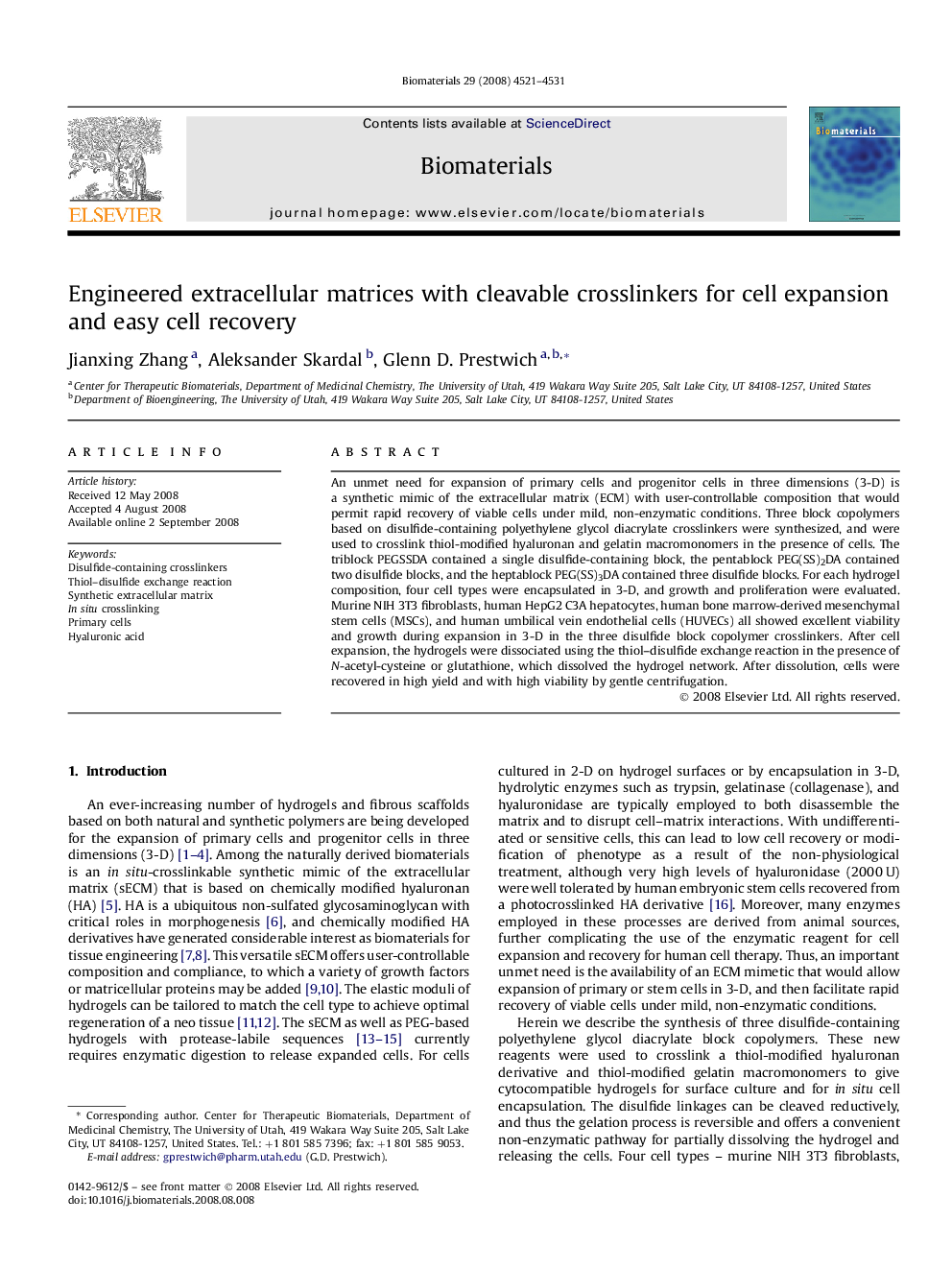| Article ID | Journal | Published Year | Pages | File Type |
|---|---|---|---|---|
| 9660 | Biomaterials | 2008 | 11 Pages |
An unmet need for expansion of primary cells and progenitor cells in three dimensions (3-D) is a synthetic mimic of the extracellular matrix (ECM) with user-controllable composition that would permit rapid recovery of viable cells under mild, non-enzymatic conditions. Three block copolymers based on disulfide-containing polyethylene glycol diacrylate crosslinkers were synthesized, and were used to crosslink thiol-modified hyaluronan and gelatin macromonomers in the presence of cells. The triblock PEGSSDA contained a single disulfide-containing block, the pentablock PEG(SS)2DA contained two disulfide blocks, and the heptablock PEG(SS)3DA contained three disulfide blocks. For each hydrogel composition, four cell types were encapsulated in 3-D, and growth and proliferation were evaluated. Murine NIH 3T3 fibroblasts, human HepG2 C3A hepatocytes, human bone marrow-derived mesenchymal stem cells (MSCs), and human umbilical vein endothelial cells (HUVECs) all showed excellent viability and growth during expansion in 3-D in the three disulfide block copolymer crosslinkers. After cell expansion, the hydrogels were dissociated using the thiol–disulfide exchange reaction in the presence of N-acetyl-cysteine or glutathione, which dissolved the hydrogel network. After dissolution, cells were recovered in high yield and with high viability by gentle centrifugation.
